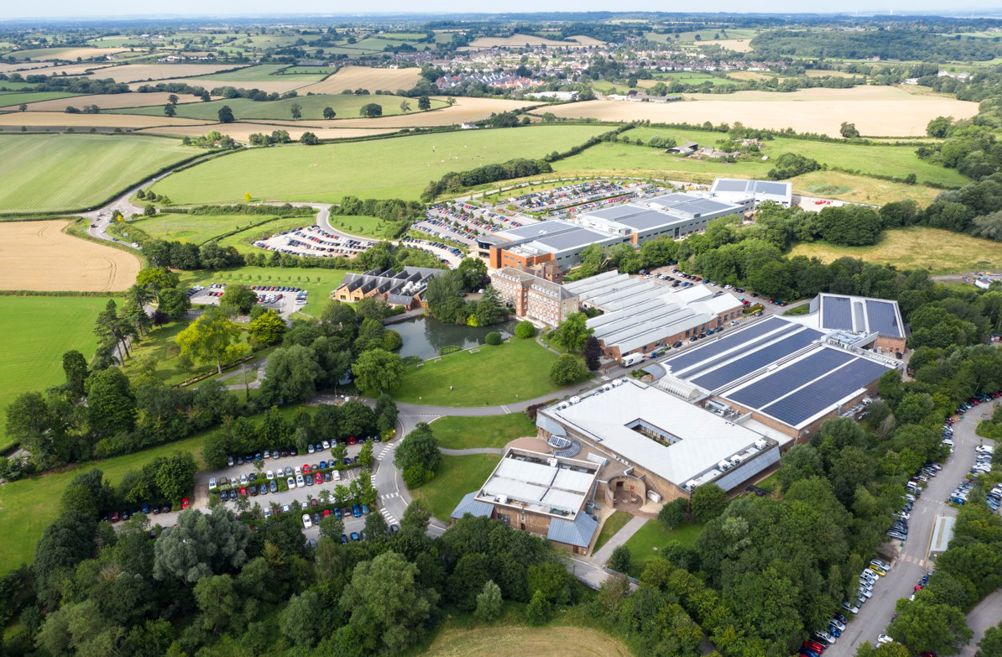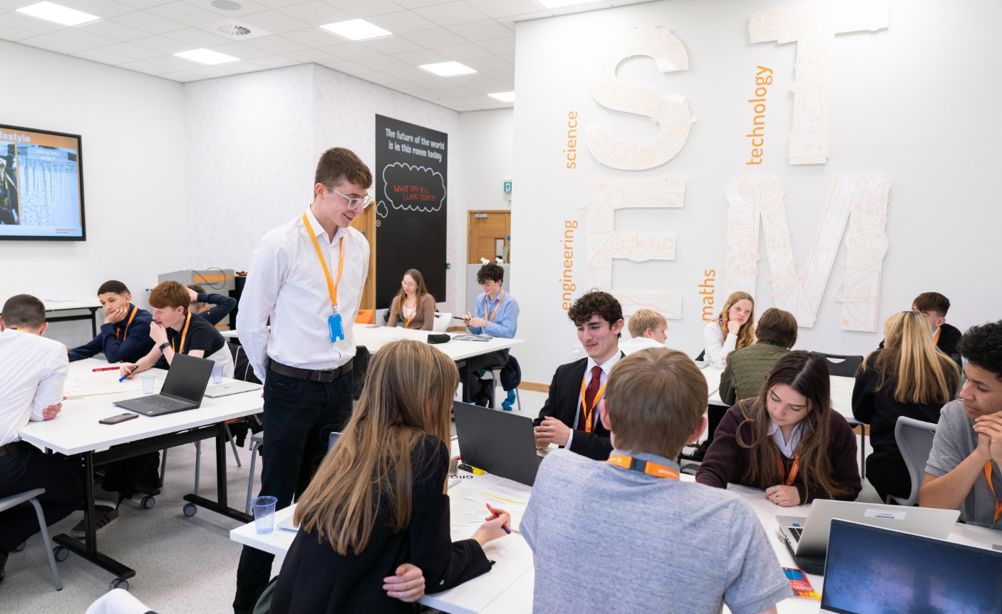Despite occasional perceptions to the contrary, the UK remains a major player on the global manufacturing stage, a fact underscored by the presence of many of industry’s biggest names. And yet, when compared to other major industrialised economies, it’s often noted that despite the household names, bona-fide homegrown manufacturing giants are a little thin on the ground.
There are of course some exceptions to this. And one of the most striking of these is Gloucestershire firm Renishaw, which celebrated its 50th anniversary earlier this summer.
Renishaw’s backstory is often held up as an all-too-rare tale of homegrown innovation flourishing into a domestic success story. Founded in 1973 by Sir David McMurtry and John Deer to commercialise a touch trigger probe invented by McMurtry whilst working on Concorde’s engines at Rolls-Royce, the company has grown to become one of the world’s leading manufacturing technology firms: establishing a portfolio of products spanning industrial metrology, automation, additive manufacturing, materials analysis and even neurosurgery.
It’s also become a major global success story: with over 5000 employees working across sites in countries including France, Germany, India, Ireland, Japan, USA and - of course - the UK where, alongside it’s numerous facilities in Gloucestershire, the firm has manufacturing operations in South Wales and R&D facilities in the Midlands, York, Exeter and Edinburgh. For the year ending June 2022, 95 per cent of the company’s £671 million sales revenue was due to exports.
Earlier this summer, The Engineer visited Renishaw’s picturesque New Mills headquarters at Wotton-Under-Edge, Gloucestershire to talk to its CEO - Will Lee - about his plans to build on this enviable legacy of innovation and growth.

Lee has been with the firm since the late 1990s, first carving a career in product development before becoming more involved in the commercial side of the business and taking over from McMurtry as chief executive in 2018. As if stepping into the shoes of one of the UK’s most celebrated industrialists wasn’t daunting enough, Lee faced something of a baptism of fire when he immediately had to steer the firm through some of the most challenging moments in its history: from the global machine tool and semiconductor recessions of 2019, to an ultimately abandoned effort to sell the firm, and of course the small matter of a global pandemic.
Reflecting on these challenges he jokes that McMurtry had picked the ‘perfect moment’ to step aside, although in truth the company’s co-founder - now its executive chairman - remains a regular presence and ever-enthusiastic sounding board: popping up across various R&D departments (additive manufacturing is apparently a particular passion) and even making a surprise guest appearance at the firm’s 50th anniversary celebrations disguised - along with other senior executives - as a Womble (another iconic UK innovation from 1973).
The last twelve months has been the first period of a bit more stability with supply chains being more normal and demand being a bit more predictable
Thankfully, despite the volatile global backdrop, the company’s now entering a period of relative calm, and Lee is finally able to start focusing on the future a little more, rather than day-to-day survival. “The last twelve months has been the first period of a bit more stability with supply chains being more normal and demand being a bit more predictable,” he said. “So despite Ukraine and whatever else is going on, it feels like it’s been a little bit more about getting engineers back to developing new products.”
Nevertheless, he’s keen that some of the lessons learned over the past few years, particularly during the pandemic, aren’t forgotten. “The biggest thing we learned is you can do things quickly when you need to,” he said, “the speed of response was phenomenal. Across the board, it allowed us to move on and then get things done. The challenge now is trying to hang onto that.”
Another factor that’s been key to helping Renishaw ride out these challenges is its breadth of product areas and target markets. And whilst recent years have seen some “un-diversification” as it’s stepped back from areas such as mining and medical diagnostics, there’s still enough breadth in its core area of manufacturing technology to deliver plenty of new opportunities: “There are some nice high growth markets,” said Lee, “we don’t need to suddenly say we want to reposition ourselves doing something different.”
To tap into these opportunities the company spends around £80 million per year on engineering. And whilst much of this is focused on improving and developing existing product lines, a major chunk is aimed at the flagship projects that will shape the longer-term future. “One of the most inspiring bits is going around some of the research and development labs…and seeing the new technology that’s going to come through in the future and beat the hell out of the competition,” said Lee.
In an important observation for other technology innovators, he stressed that one of the keys to Renishaw’s success has been that its restless appetite for innovation is married to a long-term view, an understanding that it’s important to be patient both with established product areas and emerging technologies. “All of our new businesses that are now very profitable had fairly long periods of ‘we’ve got to keep the faith’. You’ve got to have patience,” he said.

Unsurprisingly, one technology area at the heart of Renishaw’s current activities is digitalisation, and the firm recently unveiled a new offering in this area - a powerful new data platform known as Renishaw Central. This connects to measurement devices across the manufacturing process and helps manufacturers analyse, predict, and correct process errors before they occur.
The system is now being launched into the wider market, and - thanks to a series of productivity-enhancing internal deployments across Renishaw’s Miskin and Stonehouse facilities - Lee’s confident that it’s destined to have a big impact on the customer base.
Indeed, he added, it’s this ability to make use of its own manufacturing environments to prove out technologies before going to market that’s another of the company’s great strengths. “Because we’re a manufacturer it gives us a hard customer internally and they are not shy in telling us ‘you’re wasting your time here’ so there’s a great chance to prove things out and get some pretty honest feedback.”
Alongside digitalisation, another key trend shaping Renishaw’s activities is the push for net zero. The company is currently targeting net zero scope one and two greenhouse gas emissions (i.e. the emissions over which it has direct control) by 2028. And with 80 per cent of its total electricity usage coming from renewable sources (including onsite solar, wind and hydro schemes) it’s well on course to achieving this.
The far bigger challenge - and indeed a challenge facing all manufacturers - is reducing the so-called scope 3 emissions, the indirect emissions generated by suppliers and customers over which it has little direct control.
One key pillar of activity here is the use of lifecycle assessment (LCA) strategies to reduce the carbon footprint of products, a process that should help Renishaw’s customers achieve their own emissions targets by providing clear data and reporting on the carbon impact of each product. There is also a growing emphasis on design for circularity, which helps teams embed sustainable design principles and use lower carbon materials and processes.
One specific technology that Lee believes could have a key role to play here is additive manufacturing (AM), thanks to the way in which it enables the production of highly optimised components using less material. “It’s early days. And if someone said ‘OK show me for sure that this is the better net zero way of doing things,’ we don’t know at the moment,” he said. “But fundamentally, it feels if you’ve got less metal in the parts you’re making, you’re going to make them so, so much better with additive.”
Against the backdrop of this rapidly changing industrial landscape, one of the few certainties is that manufacturing organisations will need an increasingly diverse pool of talent to remain competitive and - for Renishaw - this is as much of a priority as investing in the nuts and bolts. Indeed, the patience and long term view that underpins many of its engineering activities is equally evident in its long-running skills strategy: a comprehensive program of activities focused on growing and delivering that critical pipeline of future talent.
At the sharp end this are the company’s graduate and apprenticeship programs, which this year enjoyed a record intake of around 100 graduates and 60 apprentices. But the firm also runs a wide range of STEM outreach initiatives, targeting students aged from 9 to 18. These activities are supported by four full-time members of education outreach staff and around 130 STEM ambassadors across the business, approximately 40 per cent of whom are female.

Renishaw also works hard to ensure its engagement efforts reach students across the social spectrum, and it uses data on free-school meal uptake to ensure that it’s engaging with schools and students across the region. “I think where a lot of technology companies have been a little bit guilty is they all go after the same schools with the best results, but if we all go for the same types of schools we’re never going to grow the base,” explained Lee. Similarly, an extensive work experience programme is structured to engage with the broadest possible base. “We’re conscious of avoiding the trap of just making these opportunities available to friends of friends, children of people who already have a relationship with the company,” he added.
As with most STEM activities, evidence of impact is largely anecdotal, but Lee said he’s seeing more and more people coming into the organisation whose interest was first sparked by, for example, a school visit, and this, he believes, is a more than encouraging sign that its committed efforts to create a range of skills pathways are bearing fruit. “It’s the primary source of succession planning,” he said, “ we try and minimize bringing in external experienced recruits. These people should be the future.”





Poll: Should the UK’s railways be renationalised?
Well that goes both ways, doesn't it? I mean internal combustion drivers are already paying about 59p in the £ (+ the standard rate of VAT) on fuel....